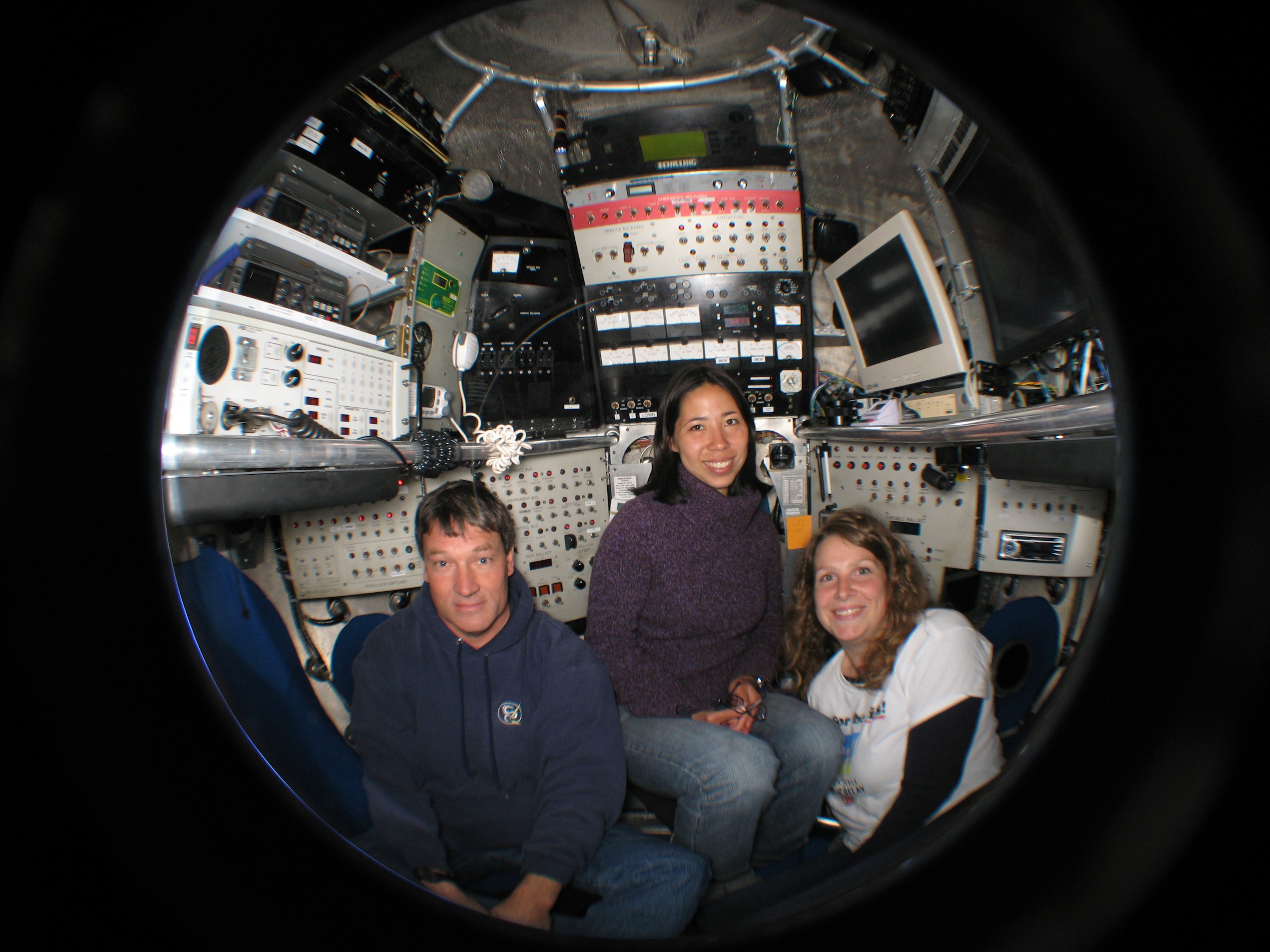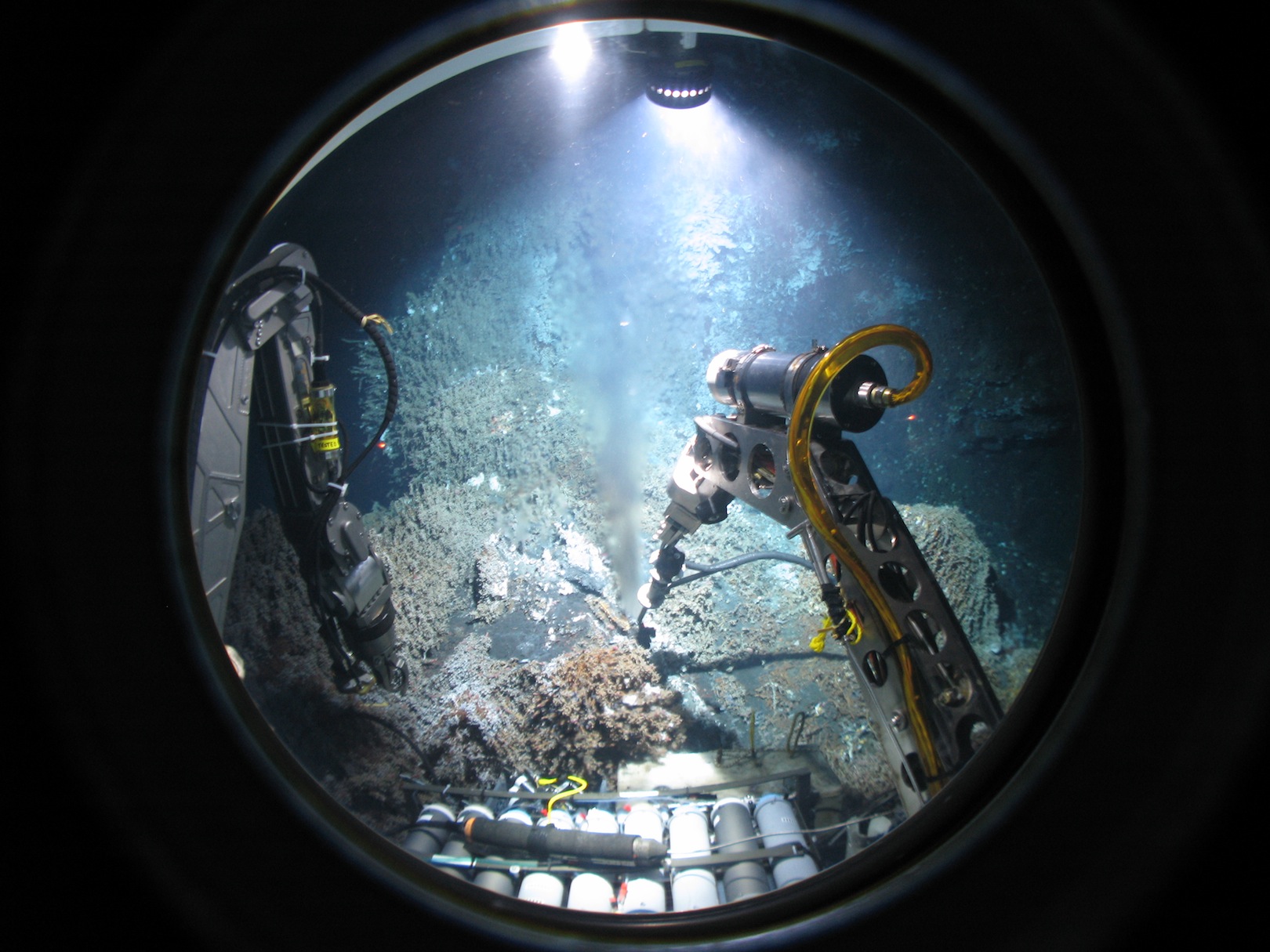 |
|
|
Fall 2013 Did Viruses Play a Role in the Origin of Life? One of the hot research topics here in the UW Astrobiology program is “Life in Extreme Environments.” By studying the tricks that life uses to survive in harsh habitats on Earth, astrobiologists can learn what conditions are truly essential for life to exist, and can better identify potentially habitable environments in the search for life beyond Earth. These hardy organisms, called extremophiles, may thrive despite limited access to energy and nutrient sources, and can often tolerate extremes in temperature, pressure, and pH that would be deadly to most other life on Earth. Rika Anderson is a UWAB researcher who studies the ecology and evolution of microbial communities living beneath the ocean floor. Last month, Rika successfully defended her dissertation in Oceanography and Astrobiology, making her the fourth recipient of UWAB's new dual-title PhD. Broadly, Rika's research aims to understand how microorganisms in the deep marine subsurface are distributed across different ecological niches, and what mechanisms they use to adapt to the harsh and often variable conditions in these environments. Most recently, she has been taking a closer look at the abundant viruses also found in these systems, and has discovered that they may play a surprising role in regulating the life in these communities. Not technically considered “alive”, viruses operate by infecting living organisms, replicating inside their cells, and continually spreading to new hosts to repeat the process. All life— from microbes, to plants, to humans—is susceptible to viral infection. Because they typically confer no apparent benefits to their hosts, and more often weaken and kill the organisms they infect, viruses have traditionally been categorized as parasites. Now, Rika's research implies that despite their parasitic role, viruses in deep-sea environments may actually be capable of “helping” their hosts via genetic manipulation, and this process may have been vital to the early evolution of life on Earth. In the viral “lysogenic” cycle, a virus enters a cell, incorporates its genetic material into the host's genome, then lies latent for several generations. In this state, the virus is dependent on its host for a longer period of time, and thus benefits when its host can remain alive— at least until conditions are just right for the virus to launch a takeover of cell machinery and begin replicating unchecked. Thus, of all the genes that a virus may transfer to its host during the lysogenic cycle, selection will naturally favor those that improve the host's ability to survive— but remarkably, this will in turn improve the success of the virus, resulting in a mutually beneficial arrangement between the two. 
Aboard the submersible research vessel Alvin, Rika's team took a fluid sample from a diffuse flow hydrothermal vent, and later performed a comparative analysis of the genes found in both the microbes and viruses present. They found that when compared with viruses in other environments, the viruses in the sample had significantly more genes related to energy metabolism. It appears that these viruses are capable of hijacking their host's metabolic function— they can make use of alternative energy sources if necessary, and it has been proposed that they may even be able to shut down non-essential processes to better conserve energy when resources are scarce, both abilities that could be highly useful in such an environment. Although the fluctuating conditions around hydrothermal vents may present a challenge for the organisms that call them home, it is precisely this variability that has led some to suggest that these systems could have been an ideal setting for the origin of life on earth, 3.7 billion years ago. These deep-sea environments may have acted as a natural laboratory of sorts, allowing many different chemical processes to occur simultaneously and mix together in a small physical space. Because it is now evident that viruses are not locked into a parasitic role, but can also genetically manipulate their hosts for mutual benefit, it seems plausible that this may have been occurring throughout life's early evolution. This lends credence to the hypothesis that viruses could have originated not from bits of escaped cellular material, or simply as smaller parasitic cells— but separately, in parallel to cells— potentially implying a symbiotic relationship that has existed for billions of years. As we continue to survey potentially habitable environments in our solar system and beyond, it has become clear that life on other planets may need to be resourceful to survive. This encouraging insight—that life may have complex strategies that allow it to adapt to even the most inhospitable of environments—has significant implications for the search for life elsewhere in the universe. Photos: (Top) A hydrothermal vent environment. (Middle) The view from the submersible research vessel Alvin. (Bottom) Rika and colleagues aboard the research vessel. |
|


